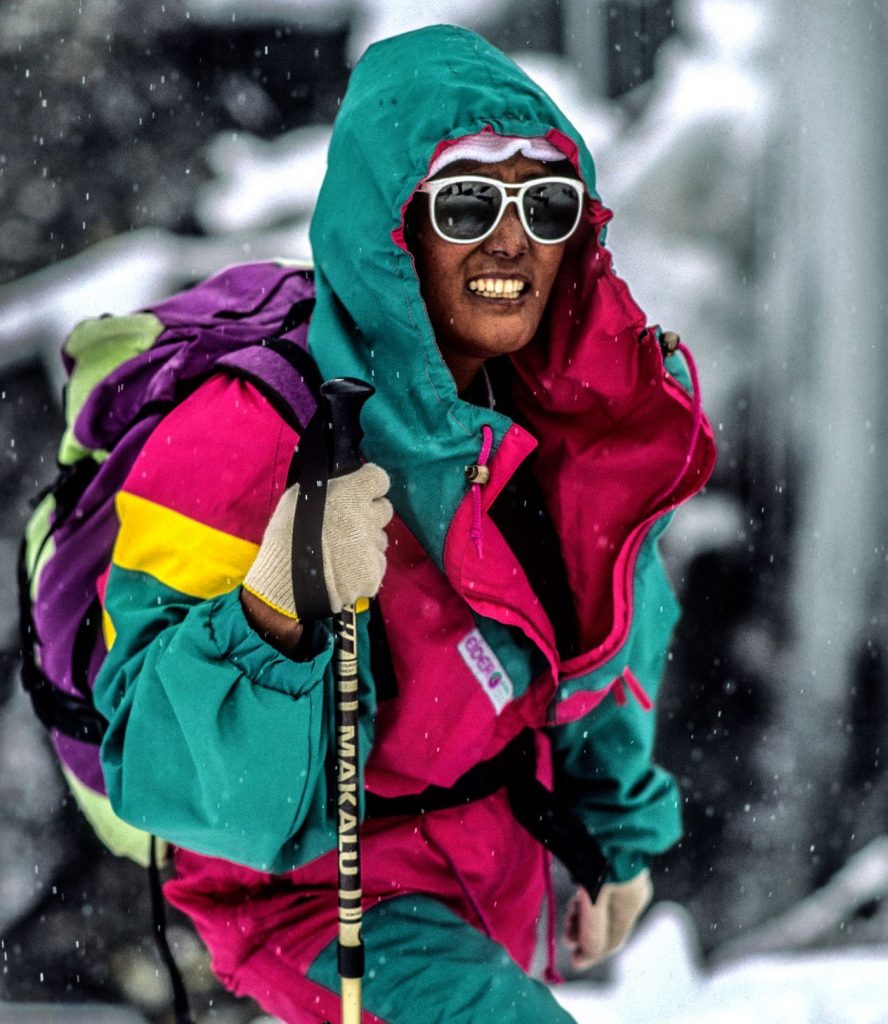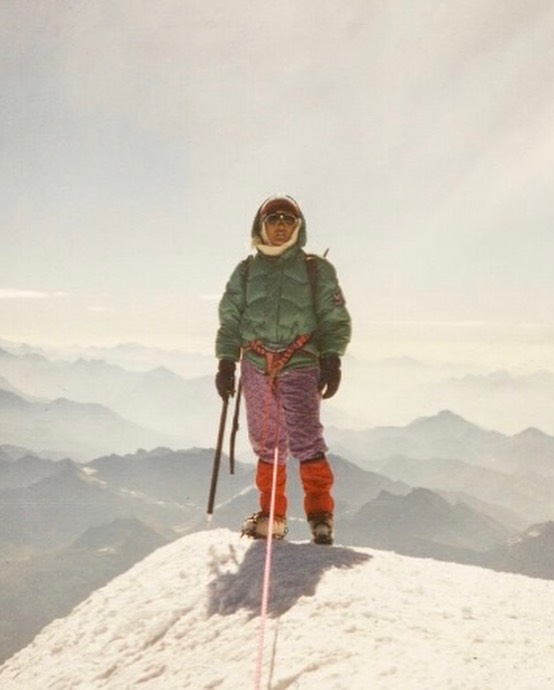
Pasang Lhamu Sherpa was a fierce woman. At a time when women had to live up to certain standards of society, she just did not care what others thought of her.
She hated it when someone told her she could not do something. Her mother told her she could not attend school like her brothers did. Her father told her she could not come on expeditions with him. This infuriated Pasang Lhamu, and rightly so.
She wanted to break the shackles and ensure women from the Sherpa community and the country could dream big and by standing on the summit of Everest on April 22, 1993, she did exactly that.
At a time when women were asked to stay home and look after their families, Pasang Lhamu Sherpa chose the extreme and decided to follow her dream. This came at a cost as she died during her descent, but her journey did not go in vain as she was able to inspire thousands of Nepali women.
A recently screened documentary on her titled Pasang: In the Shadow of Everest tells exactly that. It tells the story of Pasang Lhamu Sherpa and her sheer will, courage, obsession, and why she wanted to climb Everest.
The defiant woman

The documentary takes us into the life of Pasang Lhamu Sherpa and shows us how hard it was for her, a woman, to go out and do something in a sport dominated by men.
She felt that first-hand as the documentary shows how French alpinist Marc Batard in 1990 told her to head back down from the mountain as the expedition leader did not think she could reach the summit.
It tells us how she was told by everyone that she should stay home and look after her children and not venture out into the mountains where she could lose her life.
But Pasang Lhamu Sherpa did not listen to anyone as she persevered towards her goal – to become the first Nepali woman to climb Everest. Her bivouacking in the south summit in 1991 is proof of that as she proved how mentally strong she was.
“Women from across the world have done wonders because they got the opportunities that we living in Nepal haven’t. I want to prove that we too can do the unthinkable,” she is heard saying in the film.
And she is right. Before her, 16 women from all over the world had climbed Everest. While they climbed, no one from Nepal even dreamt of climbing it.
The hard work

The documentary on Pasang Lhamu Sherpa took nearly a decade to be made and relied on archived footage shot by news agencies in Nepal and foreigners. But the story it has told is simple yet powerful.
The director, Nancy Svendsen, even tracked down Pemba Norbu who is the last person to see Pasang Lhamu alive.
The film also shows how hard it was for her to fund the expedition on her own as Pasang Lhamu and her husband Sonam sold 60 per cent of their company to fund it.
She tried to seek help from the government and even spoke to the prime minister, but even that was in vain as she had to pay permit fees to climb the mountain.
The film shows how her eldest daughter, Dawa Futi Sherpa, is going back to find her mother and is trying to tell Pasang Lhamu Sherpa’s story to the world.
It also shows how much her husband Sonam Sherpa, who she eloped with, supported her on her quest. In all four of her attempts, Soman was on Everest rallying her and ensuring things were in place for his wife to create history.
The inspiration
On her trips to Europe with Sonam, Pasang Lhamu Sherpa saw how women ventured out into adventure activities, after which she climbed Mont Blanc. A wife of a Nepali climber accompanying him on his adventures in Europe is quite rare even today so Pasang Lhamu doing this in the 80s when the society was as conservative as ever, is something quite rare.
Yet, there she was at Chamonix dreaming of climbing Mount Everest and becoming the first woman to do so.
Svendsen travelled to Nepal and France to make this film and worked on it extensively with Pasang Lhamu Sherpa’s daughter Dawa Futi. She has done a tremendous job to show Pasang Lhamu’s courage and tenacity and how she dealt with problems at every turn in her life including from the society that questioned why a mother of three was risking her life to climb Everest.
“Dawa learned so much about her mother and saw so many pictures and movies that she had never seen before because the family didn’t have them. This has been a process of healing for them,” Svendsen told the Golden Globe Awards in March 2022.
Since it was released in 2022, the film has been officially selected for 20 film festivals and has won awards in 11 of them including Telluride in Colorado, Kendall Mountain in the UK and the BANFF in Canada.
The accolades might keep on coming for this film that tells the story of Pasang Lhamu Sherpa and her heroism that in a country like Nepal is rarely recognised. She inspired a generation of Nepali women who went out and did what they wanted to do in life. Nepali women like Lhakpa Sherpa, Dawa Yangzum Sherpa, Pasang Lhamu Akita and 62 others have climbed Everest following Pasang Lhamu Sherpa.
Many others, like her daughter Dawa Futi, have broken shackles to do what they have wanted to do in life. And many after this film, which pays homage to this great lady, will do the same.




















